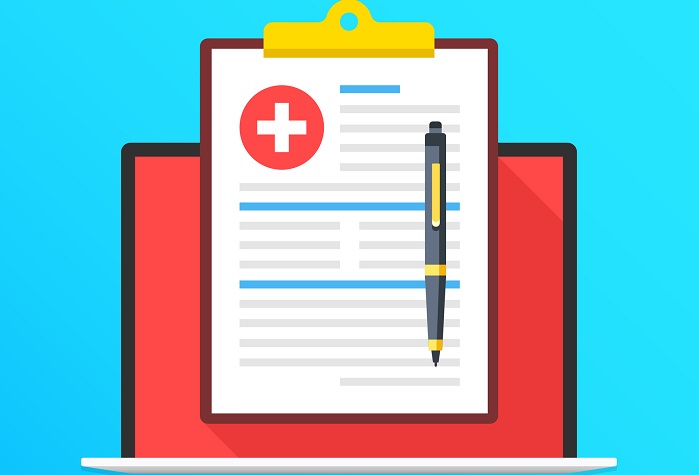Document management is one of the important areas of work with papers for managerial work. So that they can go the shortest way and reach the final destination as quickly as possible, the workflow should be organized appropriately in accordance with the established workflow rules.
Concept
By document management is understood the process, as a result of which there is a compilation, coordination, reception and transfer, their sending.
On the other hand, it represents the movement and movement of securities from the moment they occur until they are sent to the archive (or received).
All documentation can be represented in three categories:
- incoming comes from the external environment;
- outgoing enters the external environment;
- internal is created within the enterprise itself and remains within its limits.
The presented categories determine the document flows in companies that have different orientations (horizontal and vertical).
| Horizontal focus | Vertical orientation |
| Documents are moved between units of the same level | Documents move between departments at different levels |
Among the main forms of workflow, the following are possible.
| Centralized | Decentralized | Mixed |
| All documentation is concentrated in one place. | All documentation is concentrated in different departments. | The characteristics of the previous forms are mixed. |
Basic principles
There are 4 basic principles of workflow.
| Principle | Characteristic |
| Definition | Documents move in a clearly indicated direction. |
| Continuity | Document flow is ongoing |
| Rhythm | A special regulation of document flow regulation is being developed |
| Parallelism | The same process should not be performed by different employees or departments |
Violation of at least one of the principles leads to the destruction of the entire system of circulation of documents.

Main rule
Consider the basic rule of workflow.
Managing it is a difficult technological process, characterized by various parameters related to the entire work of the organization. The main feature of the workflow is the path of movement, covering all situations on the path of movement of the document from the moment of its creation (or from reception) to the moment of application. It is very important time spent on passing papers on this path. Hence the main rule of maintaining the organization’s workflow: their actual transfer along the shortest and most direct path with the least expenditure of time.
Other rules
When organizing work, you must follow the following basic rules for organizing workflow:
- the largest reduction in unnecessary and irrational cases of document transfer (due to the exclusion of technological operations for processing paper and management units that are not a consequence of the business needs of the company itself);
- exclusion or limitation of the largest return of documents (during processing - execution and issuance, during their preparation - verification and approval, etc.);
- the greatest consistency of focus and processing of the main categories of documents, provided that each movement of it should be determined.
The implementation of these principles allows you to embody the main organizational mechanism of the company - specialization, the ability to centrally perform homogeneous technological operations.
Compliance with the general rules of the workflow allows you to make better processing of papers of the management apparatus by:
- ordinary workflow, the elimination of cyclical operations that are associated with the preparation and processing of papers;
- the flow of documents, ensuring their uniform movement and promoting proportional workload.

Rule No. 1 - Centralized Reception and Dispatch
Among the rules of paperwork and workflow, the most important is the need for centralization. In other words, any paper of the organization, both incoming (regardless of the delivery method) and outgoing (except those received or sent by fax and e-mail and connected to specific performers), must be processed in one responsible service - the secretariat or the administrative unit (office). As a result, you can solve several problems at once:
- to release the remaining services and departments of the organization from technical actions (checking incoming documents, opening or sealing envelopes, marking mail or faxes)
- to increase the productivity of using office equipment in the office (copier, fax, marking and other machines used for processing documents).
In a centralized form of office work, paper processing is concentrated in the office service, and structural departments are exempted from office functions (registration and accounting, file storage, etc.).

A decentralized form of workflow implies that in the structural units of the organization there is office work with them. Usually this form is justified in case of territorial fragmentation of the organization.
In mixed form, part of the paperwork is done by the clerical service, and part by units. Most often, in mixed form, some documents are registered, monitored, put together in business and stored by the office service. These are mainly securities acquired by the management and proceeding from it. Documents on issues that fall within the competence of departments are recorded, controlled, executed and stored in the structural divisions of the company.
Rule No. 2 - Exclude Unreasonable Returns
The flow of documents should be organized in such a way that they do not return to the service (department), which has already passed. The only exceptions are situations that are justified by business necessity. For example, a document for the signature of a manager inevitably passes through his secretary twice, since he is specifically an intermediary between the manager and the heads.

Workflow rule No. 3 - preliminary study of incoming
In the total mass of incoming documents, you need to choose the most fundamental and important for the organization and study them first. If the information contained in them can be considered by a deputy or other competent employee, it is better to directly send a document to him, bypassing the manager. In order for the transfer method to be precisely found, they must be examined by a competent office worker who has knowledge of the organizational structure, functions of units, and competencies of managers and employees.
Rule number 4 - registration of documents occurs once
If he entered the department of business management (secretariat), was registered, and after studying the manager (or deputy) was in one of the departments, he does not need to be registered again. If the paper, bypassing the management, entered the department, it is also registered once specifically in the department. In other words, any document can have only one registration number assigned to it either in the accounting service, or in the unit directly.
Rule No. 5 - the resolution of the document precisely indicates the dates, performers and responsible people
Despite the fact that decisions are made by company managers, the secretary must keep this process under control and can influence it to some extent.In other words, he should make sure that the text of the decision is presented as correctly as possible, excluding the probable questions of the performer.

Rule No. 6. Separation of document flows
A document flow is a collection of one type or destination that has the same route. Usually, three streams are divided: incoming, outgoing, and internal (not created to go beyond the boundaries of the organization). Each document stream usually has sublevels (second level flows). For example, the “Incoming Documents” stream includes three types: papers from the parent company, from divisions and representative offices, as well as partner companies, people’s appeals, etc.
In the workflow of outgoing and internal documents, sublevels are distributed in the same way. Restricted papers (Trade Secret, Secret, etc.) are usually located separately. The organization’s security service controls their work.

Accounting processes
Consider the basic rules of accounting workflow.
Its size is expressed by the total number of securities that were received by the organization and executed by it for a certain period. Workflow size refers to the number of valid copies of internal documents that arrive. When calculating the size of the workflow, copies of papers made with the introduction of various technical means are also taken into account.
Accounting indicators are made out in the form of a summary, reference data on the size of documents. Their form is being developed by the organization. For example, an organization can set any frequency for counting documents: every month, once a week, once a year, every quarter. Both qualitative and quantitative study of the work process can be adopted.
The indicators obtained in calculating the size of the workflow are used in determining the number of employees and the structure of the document management service. And also to study the workload of some contracting organizations and structural divisions.

Thus, in the framework of this article, the basic rules for organizing the workflow that are applied by companies were considered.
